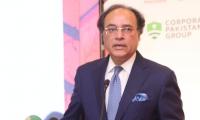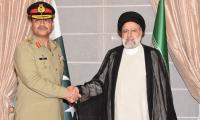Every year 23rd March is commemorated not just for the passage of the Pakistan Resolution but also for the ideals and rights of the Muslim nation of India. The Resolution provided a blueprint for the partition of the Indian subcontinent into two independent states and the birth of a Muslim state, Pakistan. This was the culmination of the Pakistan Movement, an epic struggle of the Muslims of India against British rule.
One way to look at this struggle is through a socio-political lens and the landmarks that paved the way toward this goal. The twentieth century saw Indian politics in a turmoil; the foundation of the All India Muslim League brought the Muslims under one platform and aroused a realisation of differences with the Hindus and the need to secure their political rights. While the British were the colonial power governing India, the time saw the Hindus and the Muslims pitched against each other in a vicious game of domination. One could view this enterprise in terms of factors that could be seen as organisational or structural.
Mr Jinnah joined the Muslim League in 1913 that transformed its role. A resolution was moved to form a committee for reforms and to address Hindu-Muslim issues. One result of this was the Congress-League Pact—Lucknow Pact, addressing constitutional issues in a spirit of compromise. But these gains were swept away when the Khilafat Movement emerged, notwithstanding Mr Gandhi's efforts to use the Khilafat platform for non-cooperation with the British. The Khilafat Movement played a vital role in the political awakening of the Muslims and leading a political campaign. Khilafat related conferences were held in different cities, leading to the famous Karachi Resolutions.
The Karachi Resolutions (July 1921) comprised a long list of demands; among these was enlisting of support for the noble Islamic cause. No.6 point pertinently made it ‘unlawful for a Musalman at the present time to continue in the British Army….’ Ali brothers had to face trial and imprisonment over this. (Khalid bin Sayeed, Pakistan. The Formative Phase, pp.51-53). A significant aspect of the Movement was the role of Maulana Abul Kalam Azad and Mr Gandhi in the whole affair.
This episode was followed, in March-April 1923, by a session of the Muslim League in Lucknow where Mr Jinnah moved a resolution for entering the Councils, and for dominion status. Things were slowly moving towards the Pakistan Resolution as the League gradually built up its support base.
A significant development in the Hindu-Muslim context was the Nehru Report that not only conceded the Muslims’ demand for separate provinces in North-West Frontier and Sindh but also maintained a rigid position on electorates that would keep the Muslims a minority. Another important issue was a Unitary government at the Center that again did not cater to the interests of Muslims.
The refusal of the Congress leaders to make any amendments to the Nehru Report led to an All India Muslim Conference, held under the Agha Khan at Delhi in 1929. The conference reiterated Muslims’ demand for separate electorates and weightage to Muslims in Hindu majority provinces. These demands were given a concrete shape in Mr Jinnah's famous Fourteen Points. The final draft was to be presented formally at a meeting of the Muslim League in March 1929.
The Fourteen Points principally reflected the political reality of India; these also pointed toward the Muslims’ political rights and emphasised the political sagacity of Mr Jinnah in addressing Hindu-Muslim issues. This was another firm step towards the Pakistan Resolution. The seventh point of the Resolution reads, 'Full religious liberty, i.e. liberty of belief, worship and observance, propaganda, association and education, shall be granted to all communities'. Mr Jinnah must have been familiar with the Constitution of America and the Bill of Rights, but this point was more elaborate and catered to the rights of all communities.
The failure of the Simon Commission could not be compensated by the Round Table Conferences called by the British government; the Constitutional issues remained deadlocked. The British were faced by the reservations of both the Hindus and the Muslims. In this uncertain situation the British Parliament passed the Government of India Act 1935 that would have a significant bearing on governance in India in the years to come.
While the Muslim League did not perform well in the provincial elections, it still became a powerful force in dealing with both the British and Congress, especially as it faced the Congress governments. The start of World War II in 1939 led to the resignation of Congress ministries that helped the League in its political campaign. The war situation led both the Congress and the League to a stronger bargaining position vis-a-vis the British.
Renowned poet, Allama Iqbal's idea of a separate homeland for the Muslims of the subcontinent was shaped at the Allahabad session of the Muslim League in 1930. In his Presidential address, Iqbal said, "I would like to see the Punjab, North-West Frontier Province, Sind and Baluchistan amalgamated into a single state". It is quite interesting that poet-philosopher Iqbal synthesised many ideas, an amalgamation of the Muslim majority areas, self-government, and the ‘final destiny of the Muslims of India. This encapsulated the idea of Pakistan, details of which were worked out at later sessions of the League.
This idea gained its concrete form in March 1940, at the annual session of the Muslim League at Lahore. This was moved as a formal Resolution and resonated across India, and galvanised the Muslim nation. The Resolution called for a union of Independent states in the northeast and northwest parts of the Indian subcontinent. It can be interpreted that the two ‘Independent states’ in the east and west were to be part of a federated unit.
The Lahore Resolution was a comprehensive document calling for division and independence of India and pointed toward "autonomous and sovereign" constituent units. It called upon a Working Committee to work on a ‘scheme of the constitution’ to cater to the ideals and values of the Muslims of India. It took another seven years for the dream of Pakistan to become a reality. However, many of the ideals highlighted in the Pakistan movement, and enshrined in the Constitution, are yet to become a reality.
-The author is a freelance writer and former faculty at the Quaid-i-Azam University.
DEO briefed the participants on the ongoing drive for the enrollment of children
Air ambulance would be deployed for emergency transfer of patient: says Sarfraz Bugti
Senator Palwasha Khan criticized the behavior of the SIC during the president’s address to the Parliament asserting...
Chief Justice Aamer Farooq heard the petition filed by the former president IHC Bar Council Nayab Gardezi through his...







